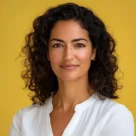In this interview, Faisal Zain, a healthcare expert specializing in medical technology, shares his insights on the advancements and impact of Elea AI in the healthcare sector, particularly in pathology labs. We will cover key topics such as the core mission of Elea AI, the technology behind it, its functionality and impact on labs, development and fine-tuning processes, user experience, market expansion, funding strategies, differentiation from other AI tools, and accuracy of the system.
Can you give us a brief introduction to Elea AI and its core mission? Why did you choose to focus on pathology labs as your initial target?
Elea AI is a healthcare technology startup aimed at revolutionizing pathology labs by replacing legacy systems with an AI operating system. Our core mission is to enhance productivity and efficiency in labs through advanced AI tools, thereby improving the quality and speed of diagnostic processes. We chose pathology labs as our initial target due to their critical role in analyzing patient samples for diseases and the significant potential for productivity gains through automation.
What specific legacy systems does Elea AI replace in pathology labs? How does Elea’s AI operating system improve lab productivity? Can you explain the role of speech-to-text transcription in Elea’s system?
Elea AI replaces traditional information systems and methods like manually typing reports using applications such as Microsoft Office. Our AI operating system shifts these workflows to an automated environment, utilizing speech-to-text transcription to convert voice notes into structured data. This allows for faster processing of tasks, reduces human errors, and streamlines the entire lab workflow, significantly boosting productivity.
How does Elea’s voice-based AI agent streamline workflows in pathology labs? Can you share specific results or improvements that labs have experienced using Elea? What percentage of lab reports have you managed to reduce the reporting time for, and by how much?
Elea’s voice-based AI agent facilitates seamless communication between clinicians and lab staff, automating task management based on verbal inputs. Specific improvements have included cutting the time required to produce around half of lab reports down to just two days. This substantial reduction in reporting time is a game-changer, dramatically improving overall lab throughput and efficiency.
How are you fine-tuning large language models (LLMs) to suit the pathology lab context? What steps are involved in turning voice notes into actionable AI instructions? Do you have plans to develop diagnostic capabilities? If so, what will that entail?
We fine-tune our large language models by integrating specialist information and data relevant to pathology labs. The process involves converting voice notes into structured text, which the AI uses to generate actionable instructions for lab equipment and tasks. While our current focus is on refining the workflow automation, we do have plans to develop diagnostic capabilities, starting with slide image analysis and potentially expanding into other areas of medical diagnostics.
On which platforms can lab staff access Elea’s system? How does integrating with an iPad app, Mac app, or web app benefit the users?
Lab staff can access Elea’s system via an iPad app, Mac app, or web app. These multiple access points ensure flexibility and convenience for different types of users, allowing them to interact with the AI system through their preferred devices and interface, further enhancing the user experience and integration within existing workflows.
Who are Elea’s current main partners and customers? What regions or markets are you planning to expand to next, and why did you choose them?
Our main partners include a major German hospital group processing approximately 70,000 cases annually. We are planning to expand to the U.S. market next due to its significant demand for advanced healthcare technologies and the opportunity for further scaling our solutions to a broader audience.
Can you provide details on the €4 million seed funding you raised last year? How are you planning to utilize your resources to scale and market Elea AI? What is your strategy for the upcoming Series A round of funding?
We raised €4 million in seed funding, led by Fly Ventures and Giant Ventures, which has been crucial in building our engineering team and launching our product in initial labs. Our strategy involves using these resources to scale our operations and ramp up marketing efforts to attract more customers. For the upcoming Series A round, we aim to secure larger funding to expand our market reach and enhance our product capabilities further.
How does Elea’s solution differ from other AI tools in healthcare? Why did you choose a vertically integrated approach instead of a spot solution?
Elea differs from other AI tools in healthcare by offering a fully integrated AI operating system rather than adding to existing systems. Our vertically integrated approach ensures seamless operation without the need for multiple interfaces or third-party tools, enabling a streamlined and efficient user experience. This approach allows for comprehensive automation and better control over the processes, resulting in significant productivity gains.
What about accuracy and verification of Elea’s system? How do you ensure accuracy in AI transcriptions, and what measures are in place for error prevention?
We ensure accuracy in AI transcriptions by continuously evaluating and refining our models, monitoring the number of manual changes users make to reports. Additionally, we have incorporated a “second pair of eyes” feature where the AI cross-references previous and current findings to prompt doctors to review potential discrepancies. This safety net helps minimize errors and ensures reliable report generation.
What is your forecast for the future of AI in healthcare diagnostics and management?
I believe AI will continue to transform healthcare diagnostics and management by driving efficiency, reducing errors, and supporting medical professionals in making more informed decisions. As AI technologies advance, we will see more personalized and timely treatments, improved patient outcomes, and a shift towards preventive and predictive healthcare models. The integration of AI will ultimately create a more efficient and patient-centered healthcare system.









